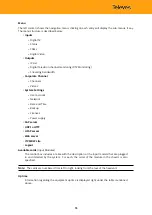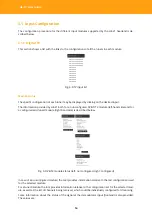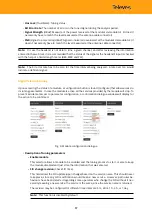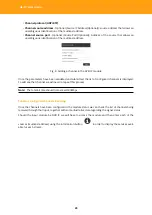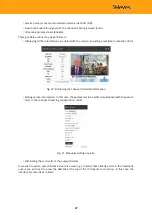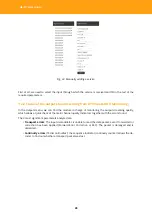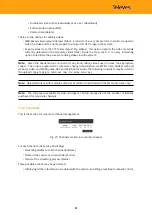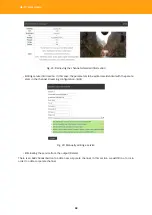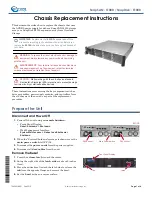
HE-21: User Guide
– Input type
(Delivery System)
This field allows the selection of a signal reception system among the different systems that
are compatible with each card. The options are: DVB-S/S2, DVB-T, DVB-T2, DVB-C and ISDBT.
– Frequency
Mandatory field, to be filled in with the frequency in Hertz (Hz).
– Bandwidth
A field in which to enter the signal bandwidth in Megahertz (MHz).
– FEC
(Forward Error Correction)
An error correction mechanism which main characteristic is that it allows the correction to
take place without the need for information retransmission; it is therefore very useful in sys-
tems where contents cannot wait for data retransmission in order to be reproduced. Possible
values for this parameter depend on the type of module.
Note:
Since it is automatically detected, it is recommended that it remains in Auto mode.
– Modulation
The configuration values available for this parameter depend on the reception system:
* DVB-T/T2 : QPSK, QAM16, QAM64, QAM256, and Auto
* DVB-C : QPSK, QAM16, QAM32, QAM64, QAM128, QAM256
* DVB-S/S2: QPSK, 8PSK
Note:
It is recommended that the Auto is selected whenever available.
– Guard interval
It is used to prevent signal echoes resulting from the reception of different reflections of the
signal caused by obstacles.
Note:
Since it is automatically detected, it is recommended that it remains in Auto mode.
– Transmission mode
It specifies the different DVB-T/T2 and ISDBT codings the module may receive. Possible con-
figurations are: 1K, 2K, 4K, 8K, 16K, 32K and Auto.
Note:
Since it is automatically detected, it is recommended that it remains in Auto mode.
– Polarization
(LNB Voltage)
Signal polarization refers to the behaviour in relation to the earth’s surface. That is to say,
vertical polarity (V) signals are transmitted at 90° in relation to the earth’s surface, while hor-
izontal polarity (H) signals are parallel to the surface of the earth.
A given voltage is supplied to the LNB in order to specify the desired polarization:
* Vertical polarization: 13 V
* Horizontal polarization: 18 V
A 0V option is available to prevent sending a signal to the LNB, for use in cases where signal
is already present and sending voltage may cause conflict.
18












